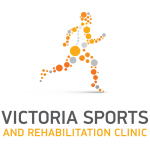2020 has been a crazy year for us all, and so many have chosen new ‘health kicks’ to help get us though. Many of us are walking and running more, making most of our hour of exercise outdoors. But have you stopped to think about what impact it is having on your bones?
Our bones and skeleton is a remarkable organ that serves both a structural function, providing mobility, support, and protection for the body, and a reservoir for the storage of essential minerals. Genetics play a huge role in bony production which is completely out of our control but what a lot of people don’t know is that what we do in everyday life including the things we eat, medicines we take and activity we do dramatically changes the strength and size of our bones.
DIET
Vitamin D and calcium are vital for bone growth and health (modelling and remodelling) in children and adults for the entirety of their lives. Vitamin D can be gained from dietary and non dietary sources (such as the sun). During winter months it is extremely important to make sure that you are still getting enough intake and it is always recommended to look at dietary sources such as fish, cheese, eggs mushrooms and soy before looking at supplementary options. Calcium is rich in most dairy products however is also found high in green leafy vegetables, nuts and tofu. To best optimize your bone health it is recommended that we consume the following:
Calcium:
Vitamin D:
MEDICATIONS
There are many medications that affect your bone density and health and it is always best to speak to your general practitioner or pharmacist for specific medication advice. Generally, the commonly known medications that have a significant effect on bone density are glucocorticoids (such as cortisone and prednisolone), some oral contraceptive pills, thyroid medications and many more. Never stop taking prescription medication without consultation with your GP however it is important to be aware of known side effects so that you make an active effort to prevent bone loss in other ways. It is also widely researched that smoking and high alcohol intakes decrease the bone density and increases the risk of bony conditions.
MOVEMENT
Did you know that our bones grow and change shape based on the pressures and tensions that they are placed under? Isn’t that amazing! Bones best grow and develop with strong muscles around them. The type of exercise is also extremely important to help growth and development as it is all about the ground reaction forces. Exercises such as swimming have very low effects on bone growth compared to walking, let along running. Impact based exercise is necessary for strengthening bones for people of all ages to stay healthy and prevent conditions like osteoporosis and the effects that come with it.
HOW MUCH EXERCISE AND HOW OFTEN?
It is recommended that adults exercise a minimum of 3 times per week and gradually increase in duration and impact to avoid injury. It is critical that you are aware of your capacity and do not overload yourself, as it can lead to injury. Always make sure that you are wearing correctly supporting footwear and are being mindful of any known injuries.
To put it simply, if you are normally a swimmer or cyclist (in the low osteogenic category), try and add in a walk once a week and increase slowly from there. Whereas if you normally jog, you may want to add in 1 session of tennis or skipping to increase your bone health.
Please remember that increasing any form of exercise should be done gradually and it is extremely important for recovery to have a days rest in between sessions.
WHERE THIS CAN GO WRONG!
Overloading is really common and can lead to complications in our musculoskeletal health. When speaking about bones, it can present as niggly pain and aching with movement, weight bearing or sit to stand positions. If the individual doesn’t rest following this and there isn’t adequate recovery time, injury can set in. This is where we can see the overloading based injuries. Most of the time, if unmanaged, by the time they present to the clinic they are categorized as stress reactions or stress fractures. These can be very painful, take extremely long recovery times, stop the individual from doing a lot of the things they love and can sometimes require surgical intervention. To avoid all of this, please know your limitations and be considerate to your body. Always increase your exercise habits SLOWLY and give yourself rest days to recover in between sessions. Be kind and listen to your body. Ensure that it is appropriate for you to start the new exercise and that you will not aggravate any existing injuries, and always make sure that you have supportive footwear and that you have considered the surface that you will be exercising on. If something doesn’t feel right then please stop, reassess and reach out for help. We can’t express this enough with the increase in joggers that are out exercising currently. This could help you avoid a really nasty injury!
We hope that this information helps you make better choices about your diet and exercise to encourage you to stay healthy. If you have any questions please don’t hesitate to contact us at the clinic!
References:
ww.ncbi.nlm.nih.gov/books/NBK45504/
https://www.bones.nih.gov/health-info/bone/bone-health/nutrition/calcium-and-vitamin-d-important-every-age
https://www.ncbi.nlm.nih.gov/pmc/articles/PMC3152283/
